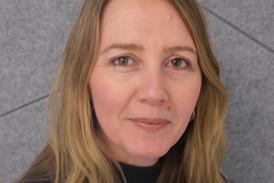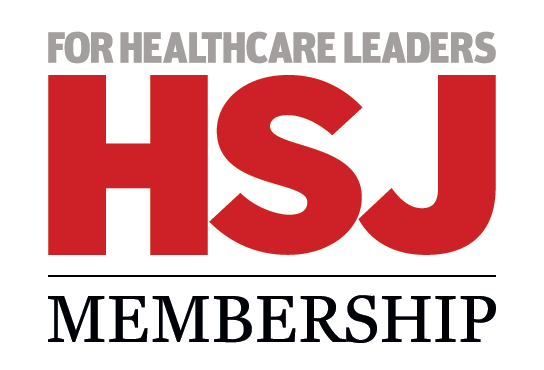If the NHS wants to both improve care and become the sort of life sciences powerhouse the health and social care secretary Wes Streeting has talked about, bringing together data collected by both healthcare staff and researchers will be vital.
In association with
This is happening across the country, but progress has been variable. An HSJ webinar, in association with Snowflake, looked at north west London where research and NHS organisations, through the NIHR Imperial Biomedical Research Centre Digital Health Theme are partnering to deliver impactful data-driven healthcare improvements for citizens.
The position with health and social care data has transformed in recent years, said Erik Mayer, consultant surgeon, clinical reader, transformation CCIO for informatics and director of the iCARE Secure Data Environment, with nearly all healthcare providers now having electronic patient record systems. These can be used to benefit patients and the public, he said, but digital interventions should also support the workforce, especially around operational efficiencies, in the first instance.
Established secure data environments, such as iCARE, and their appropriate governance for accessing Health Research Authority Board approved de-identified routinely collected healthcare data are critical to supporting the pipeline of data-driven research and innovation. “In north west London… we were one of the first schemes to go forward… to support the [One] London subnational, secure data environment,” he added. “What that has done is really shifted the mindset of sharing data.
“We don’t share data. We bring the researchers to the data. It’s all about data access. And of course, that is very important in supporting the narrative of ‘we are custodians of patient and public data’, and making sure it is used in a safe way.”
Meanwhile, as more and more data is made available, there are challenges about how that is “cleaned” – something which is presently done by humans but could scale up to include some automated processes and potentially leverage artificial intelligence. There are challenges around this, however. It is necessary to understand data’s provenance — where it has come from — and clinical meaning, he added, and this absolutely requires the input of frontline clinicians and allied healthcare professionals, ie all those that input data into electronic healthcare records.
“This is not about replacing people,” Mr Mayer said. “It’s about supporting them to do the job that actually they need to do and taking away some of the function that otherwise they’re just repeating on a project-by-project basis that actually could be automated. So that is part of the financial challenge that we’re trying to address.”
Ben Glampson, deputy director of the iCARE Digital Collaboration Space, said a lot of work had been done to bring together the necessary data and provide the tools which scientists wanted to use to understand, evaluate and analyse the data in a secure environment. But with so much data it was important the clinical interpretation of a data point was correct, which means bringing together clinicians, data engineers and data scientists, in a multidisciplinary environment to understand what they are looking at.
“It requires making sure that outputs have clinical meaning, and that the insights that are derived from those outputs will impact people at the front end,” he said. The results can then be presented in dashboards to clinicians while ensuring the impact is monitored and benefits in care and care delivery are being realised.
The team is currently working on delivering clinical decision support to clinicians which takes account of the context of the system they are working within, he added.
Bringing data together can produce change in tackling health inequalities. North west London has a population health approach, using a data platform called the Whole Systems Integrated Care (WSIC/DiscoverNow). This aims to shift the dial towards prevention and avoiding hospital admissions.
“We use a lot of information and data to help us address this problem in north west London,” said Kavitha Saravanakumar, North West London Integrated Care Board director of business intelligence. “This includes getting detailed information of service users on their utilisation of the healthcare — whether it is the activity they’ve undertaken in primary care or acute care, mental health, community, social care — because we need an end-to-end journey of these users and patients to get an understanding of the handoffs and their experience through navigating the system to get the best of the treatment.”
Working with Imperial, the ICS was able to build an evidence-based approach which allowed it to present information to decision-makers to show where inequalities existed, whether age, gender, ethnicity or living in a deprived area. Both quantitative and qualitative information was important to inform a holistic picture, she added.
An information sharing agreement across north west London allows for information coming out of both primary and secondary care, and other linked systems in the community, to be used for direct patient care and for research in a de-identified form, said Mr Mayer.
The output can also be used to support clinical decision-making and the workforce by flagging any codified problems, such as long-term conditions and diagnoses, to help save staff the time of having to log it manually. Furthermore, it can be tailored to inform patients and be presented in different languages.
Ms Saravanakumar said: “Not only have we got that joint data controllership arrangement, we have been through big public deliberations to really engage with our patients and public to help them understand how we use their data. And I think that’s key and [we have] spent a lot of time developing fair processing notices and privacy notices which have been reviewed legally, and we publish on our websites and also encourage our data controllers to publish on their websites so patients and the citizens understand how their data is being used.”
From a research perspective, the system of de-identified data allows for patients to be contacted through the NHS to see if they would like to join a study relevant to their condition: across north west London, 100,000 people were on a research register, said Mr Glampson.
But doing all of this can come at a cost – and the NHS is not awash with money for such projects. Janet Broome, Snowflake account director for the NHS, said: “The Imperial approach is a really good example of how to implement a big data project and a real data-driven project that isn’t costing millions and what they’re able to do within Snowflake.”
The software was paid for on a consumption model with the opportunity to optimise costs through information about which accounts were using most, she pointed out. This contrasts with traditional models which tied users in with licenses based on user numbers and yearly subscriptions.
“It gives organisations the ability to implement something where the infrastructure already exists so there’s not huge infrastructure costs,” she added.
An on-demand version of this webinar is available.
If you have already registered as a viewer, visit this web page to access the recording.
If you have not previously registered, complete the registration form here and you will then be sent details of how to access the recording.


























